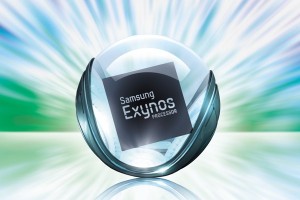Samsung has introduced a new system-on-chip (SoC), which will form the basis of Korean handheld devices for future generations. In place of four Quad Exynos company has developed an Exynos 5 Dual (5250) and this is the first officially announced SoC processor-based ARM Cortex A-15 and the GPU Mali T604.
It should be noted that the decision of Samsung became known late last year, but it was a kind of “rough” or test version, which is in the process of active development. Now the company has created the ultimate model of the SoC, and which will go into mass production.
Among the features of the system-on-chip are the following:
• Two computational power ARM Cortex-A15 with a frequency of 1.7 GHz.
• Graphics Accelerator Mali-T604.
• Support for OpenGL ES 3.0.
• Support for OpenCL 1.1 with a complete profile.
• Supports resolutions up to WXQGA (2560×1600 pixels).
• Support Wi Display-Fi .
• Support 2-channel LPDDR3 RAM 800 MHz (memory bandwidth – 12.8 GB / s).
• Supports 1080p/60 video processing and codec VP8.
• Support for USB 3.0.
The new SoC Samsung was very powerful, but at the same energy-efficient. Sense to use the four cores in this case is not, as at a similar frequency of computing power Cortex-A15 approximately twice more productive than the Cortex-A9, and consumes less energy. Also worth taking into account the use to create a modern Exynos 5 Dual High-K Metal Gate 32nm, which also provides many advantages compared to existing solutions.
No less interesting and GPU Mali T604, constructed on the basis of architecture Mid-gard and supports the most current graphics technology, including the aforementioned OpenGL ES 3.0 and OpenCL 1.1 with a complete profile, as well as a unified shader model. By the way, ARM architecture GPU not change more frequently than once every five years, and now is the moment.
Another important feature of the Samsung Exynos 5 Dual – is support for the protocol -Panel Self-Refresh (PSR). It allows about 20 times lower power consumption of the display when displaying static images, such as when the user reads the e-book, photo viewing, etc. It is expected that the first products based on new SoC will appear later this year. Perhaps this will be the mythical tablet Samsung with Retina-display.
